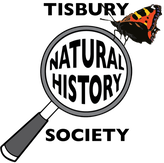|
For those of you who missed it, Ian Dunn, Chief Executive of Plantlife gave a sobering talk in November on the climate and biodiversity crisis, the importance of plants, the work of Plantlife and how we all have a role to play in turning the tide. The World Economic Forum recognises that four of the top five global risks are nature and climate relevant. Some parts of the world have already experienced a 7°c increase in temperature since 1981. Tangible water stress is being felt around the world. Some of the vast underground water wells in Central Africa have dropped by 80-100 metres in the last twenty years. Over extraction is a further problem despite rain falling in higher concentrations in more extreme weather in other parts of the world. Leaders around the world are lagging behind their people in wanting to take action for the climate. Global warming if unchecked will lead to a catastrophic future for hundreds of millions of people unless radical change is achieved. Biodiversity is in crisis with 60% of global biodiversity lost since the 1970s. As the climate warms, species loss will accelerate. The UK is already one of the most nature depleted nations. 70% of the UK is agricultural land with massive post war industrialisation contributing to catastrophic loss in biodiversity. Biodiversity is critical to our future. Yet 80% of our major global crops come from just nine species. Plants, which make up 90% of biomass on the planet, are vital for maintaining oxygen levels on the planet: 50% comes from plants; 50% from the oceans. Much more than that, plants are vital for food, medicines, climate control, water management, flood mitigation, clothing, art and culture. The UK despite being in a temperate zone is already seeing shifts in plant habitats northwards. Changing weather patterns are disrupting the symbiotic relationship between plants and insects. Change is already more radical in countries in the developing south with impacts such as desertification underscoring our need to address social justice and inequality issues elsewhere. Plantlife operates at a global level as well as at national UK and local levels. It contributes to the global strategy for plant conservation and has helped to identify 2200 of the highest biodiverse plant areas across the globe. Alongside Planta Europe, it is working to ensure plants are recognised in every global strategic framework as an important part of addressing climate change and biodiversity. In the UK Plantlife looks after around 18,000 hectares spanning 23 nature reserves, the largest in Scotland. It advocates for change at a policy level working in partnership with other conservation organisations. It offers extensive best practice advice from wildflower meadows, lawns and road verges to grasslands. At a local level, its No Mow May campaign promotes measures to increase pollinators and plant species. Visit Plantlife’s website to benefit from its online resources and talks. Read their Strategy to 2030 For a World Rich in Plants and Fungi. Join their mailing list and lobby on their campaigns for road verges, grasslands and plantlife. Support Plantlife by joining as a member or making a donation to support their invaluable conservation work which is vital for our future. For those of you who missed Ian's talk, he has kindly given us permission to share it with you here. Laura Downer Comments are closed.
|
Photo: Avocets (Izzy Fry)
The headers display photos taken by our members. Do get in touch via the Contact Form if you'd like to submit a photo for selection.
Archives
May 2024
Categories
All
|

 RSS Feed
RSS Feed